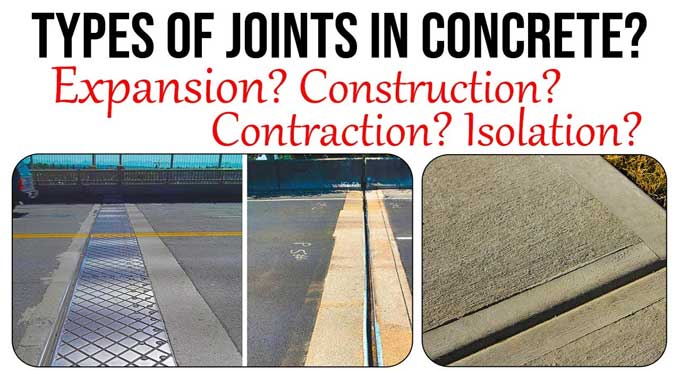
The Importance of Isolation Joints in Concrete Structures
Concrete slabs isolated from walls, columns, or drain pipes. In isolation joints, structural components are allowed to move independently of one another.
A process vessel can be electrically isolated from the fluids it contains or processes with an isolation joint made of concrete or metal.
Define Concrete Joints
Basically, joints in concrete are cracks intentionally created, which appear as interruptions in surfaces. They usually are manufactured using dry cut or sawed early entry techniques and conventional wet cut techniques.
Define Isolation Joints
Isolation joint is capable of rotation and translation in all directions. As a type of separation, an isolation joint in concrete structures allows relative movement in three directions between separate structural members.
It's a joint between adjacent sections of a concrete structure that allows movement in three directions. All reinforced concrete is interrupted through the Isolation joint.
Construction Process of Isolation Joints
Prior to pouring the slab, preformed joint material is placed next to the column, wall, or standpipe to form isolation joints. The most common material for isolation joints is asphalt impregnated fiberboard, but plastic, cork, rubber, and neoprene can also be used.
Isolation Joints Features
- An isolation joint separates one structural unit completely from another. A preformed joint material fills the full depth of a slab's isolation joint between concrete structures, such as a slab and a wall.
- Columns or walls nearby cannot be damaged as a result of this gap between the slab and the wall.
- There is an isolation joint separating the slab from the column footing. The slab around the column remains undisturbed or will not crack if the column settles. Temperature changes also allow the slab to expand or contract.
- Rubber, neoprene, foam insulation, or asphalt-impregnated material can be used for isolation joints.
- It is necessary to design and place isolation joints in the desired location prior to pouring the concrete slab. The reinforcing steel should stop at the joint and not continue through the joint.
- There is a full depth of isolation joint filler in the concrete, which must allow for expansion and contraction as well as horizontal and vertical movement.
- There is a range of half to one inch in width for isolation joints. It may be possible to experience excessive movement when the width is greater.
- Filler material should not extend from the sub base all the way to the top of the slab to form a seamless isolation joint.
- An elastomeric sealant is applied to the space between the joint filler and the cutoff top to achieve a cleaner appearance.
- By allowing horizontal and vertical movement of the isolation joints, high performance is achieved.
- Due to the movements of nearby elements, slabs without isolation joints can crack. In every slab crack, there is a weak point that could cause structural or maintenance problems.
Isolation Joints Uses
Additionally, isolation joints can refer to the points where in-pavement structures that meet under pavement such as drainage inlets, manholes, and footings meet.
Pavements and structures are isolated by isolation joints to allow for anticipated differential movements horizontally and vertically. The purpose of these structures is to allow movement without causing damage to adjacent structures.
Difference between Control Joints & Isolation Joints
Contraction joints, also known as control joints, are placed in fresh concrete before it has a chance to produce its own joints. Isolation joints are formed before the concrete is poured; control joints are formed after it has been poured.
To get more details, watch the following video tutorial.
Video Source: Civil Mentors


